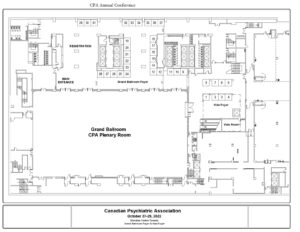PS01b – Intranasal Esketamine Versus Intravenous Ketamine: An Observational Study Comparing the Efficacy and Tolerability of Two Novel ‘Standard-of-Care’ Treatments for Treatment-Resistant Depression
Thursday, Oct. 19
14:30 – 15:30 (N/A)
Meeting Room: Finback (3rd floor – B Tower)
Gilmar Gutierrez*, MD Gustavo Vazquez MD PhD
CanMEDS Roles:
- Leader
- Health Advocate
- Medical Expert
At the end of this session, participants will be able to: 1) Compare and consider the effectiveness and tolerability of intravenous ketamine and intranasal esketamine in real-world clinical practice; 2) Consider the benefits of these novel therapies and potential applications in the management of treatment-resistant depression; and 3) Use this real-world clinical perspective to inform clinical practice and management of patients with treatment-resistant depression.
Intravenous (IV) ketamine and intranasal (IN) esketamine are novel therapies for management of treatment-resistant depression (TRD). This study compared the real-world effectiveness and tolerability of IV ketamine and IN esketamine in the management of unipolar TRD.
Methods: This observational study is still in progress, recruiting patients with moderate to severe TRD referred to receive IV ketamine or IN esketamine treatment. Effectiveness of these treatments is assessed with the Montgomery–Åsberg Depression Rating Scale (MADRS) for depression severity and Item 10 of the MADRS for suicidal ideation (SI). Tolerability is assessed by tracking side effects and depersonalization with the six-item clinician-administered dissociative symptom scale (CADSS-6) depersonalization scale. The data are analyzed with descriptive statistics, risk ratio (RR), and Cohen’s d.
Results: These are preliminary results, with 17 patients referred to IV ketamine and 7 referred to IN esketamine recruited so far. Both IV ketamine (d = 3.07, p < 0.0001) and IN esketamine (d = 1.39, p = 0.0086) significantly reduced depressive symptoms. Patients receiving IV ketamine treatment had a significant reduction in SI (d = 1.14, p = 0.0027), significantly higher risk of developing side effects (RR = 1.62, p = 0.0046), significantly lower depersonalization score (d = 1.306, p = 0.013), compared to those receiving IN esketamine. All side effects reported were mild and transient.
Conclusions: These preliminary results suggest that both IV ketamine and IN esketamine are effective in managing depressive symptoms and well tolerated. Thus, the results of this study could serve to guide clinical practice and health policy.
References:
- Bahji A, Vazquez GH, Zarate CA. Comparative efficacy of racemic ketamine and esketamine for depression: a systematic review and meta-analysis. J Affect Disord 2021;278:542–555.
- Gutierrez G, Rosenblat J, Hawken E, et al. Efficacy and tolerability of two novel “standard of care” treatments-intranasal esketamine versus intravenous ketamine-for treatment-resistant depression in naturalistic clinical practice: protocol for a pilot observational study. JMIR Res Protoc 2022;11(5):e34711.

